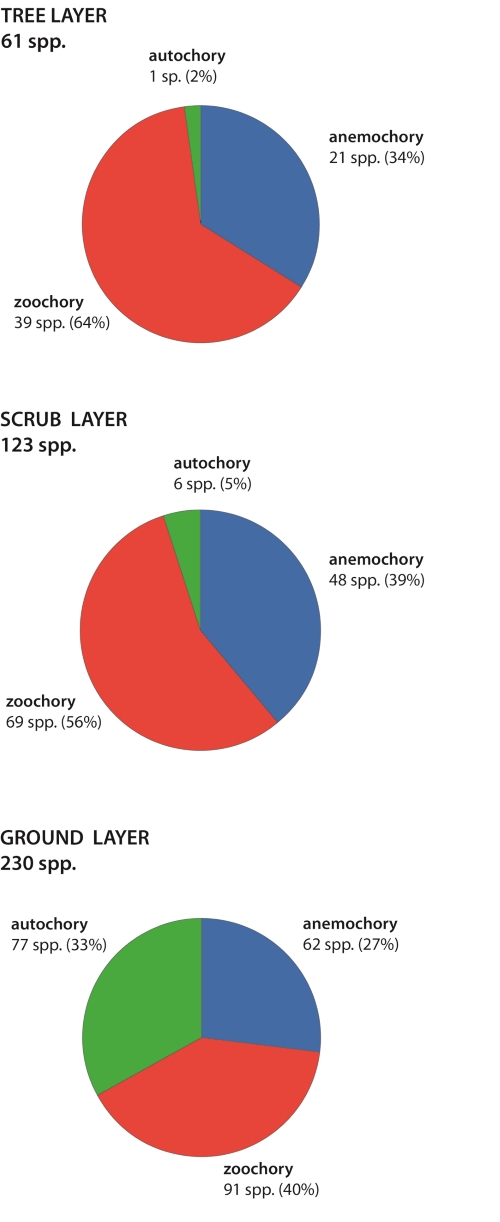ABSTRACT
A comprehensive census of a hectare of cerrado s.s. in southeastern Brazil, a small-tree and scrub woodland physiognomy, allowed the evaluation of whether pollination and dispersal modes are correlated with the stratification of the vegetation and if so, in what way. Generalist pollination, and pollination by small bees, as well as ornithophily and anemophily were more frequent in the lower layers (ground and scrub), while species pollinated by large bees and beetles are more or less equally distributed among the ground, scrub and tree layers. The three nocturnal pollination modes, phalenophily, sphingophily, and chiropterophily indicated a preference for the upper layers (tree and scrub). Zoochory predominated in the tree layer, but autochory increased towards the ground at the expense of anemochory and zoochory. We discuss possible reasons for the height distribution of pollination and seed dispersal modes and compare the situation in Cerrado with other Neotropical forests.
Keywords:
cerrado s.s. woodland; dispersal systems; Neotropical forests; pollination modes; vertical stratification

 Thumbnail
Thumbnail
 Thumbnail
Thumbnail
 Thumbnail
Thumbnail
 Thumbnail
Thumbnail
 Thumbnail
Thumbnail
 Thumbnail
Thumbnail
 Thumbnail
Thumbnail
 Thumbnail
Thumbnail







